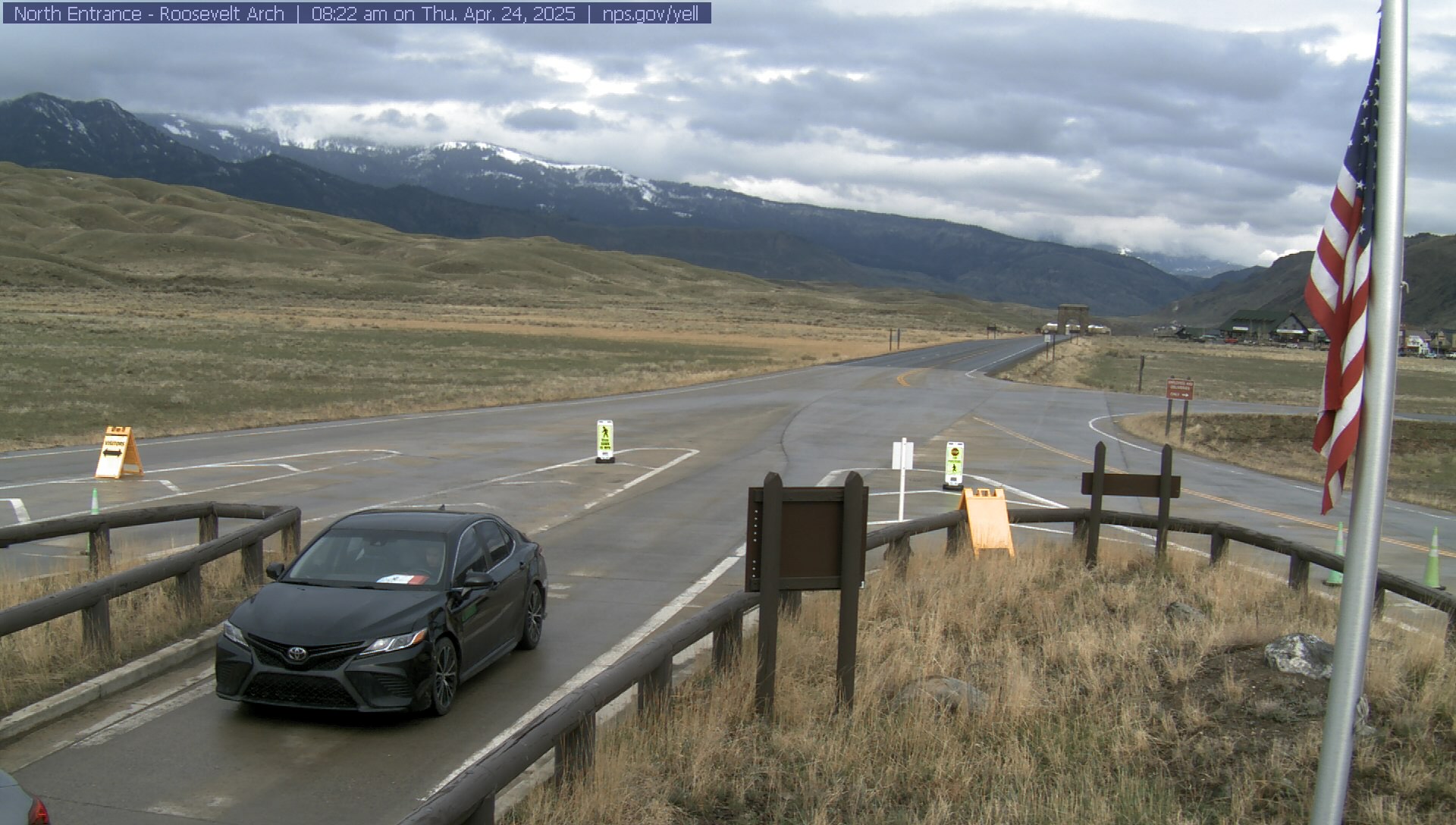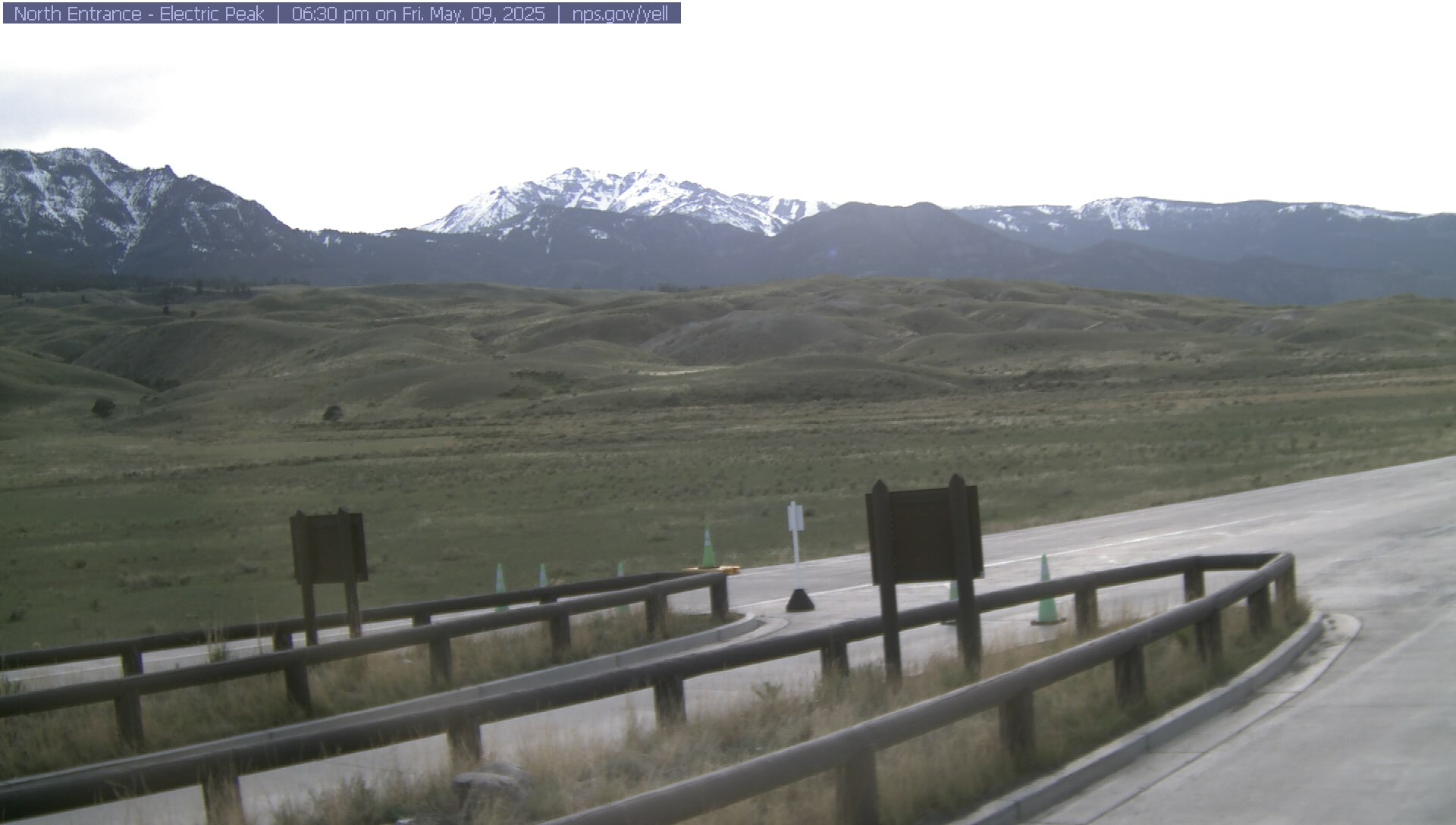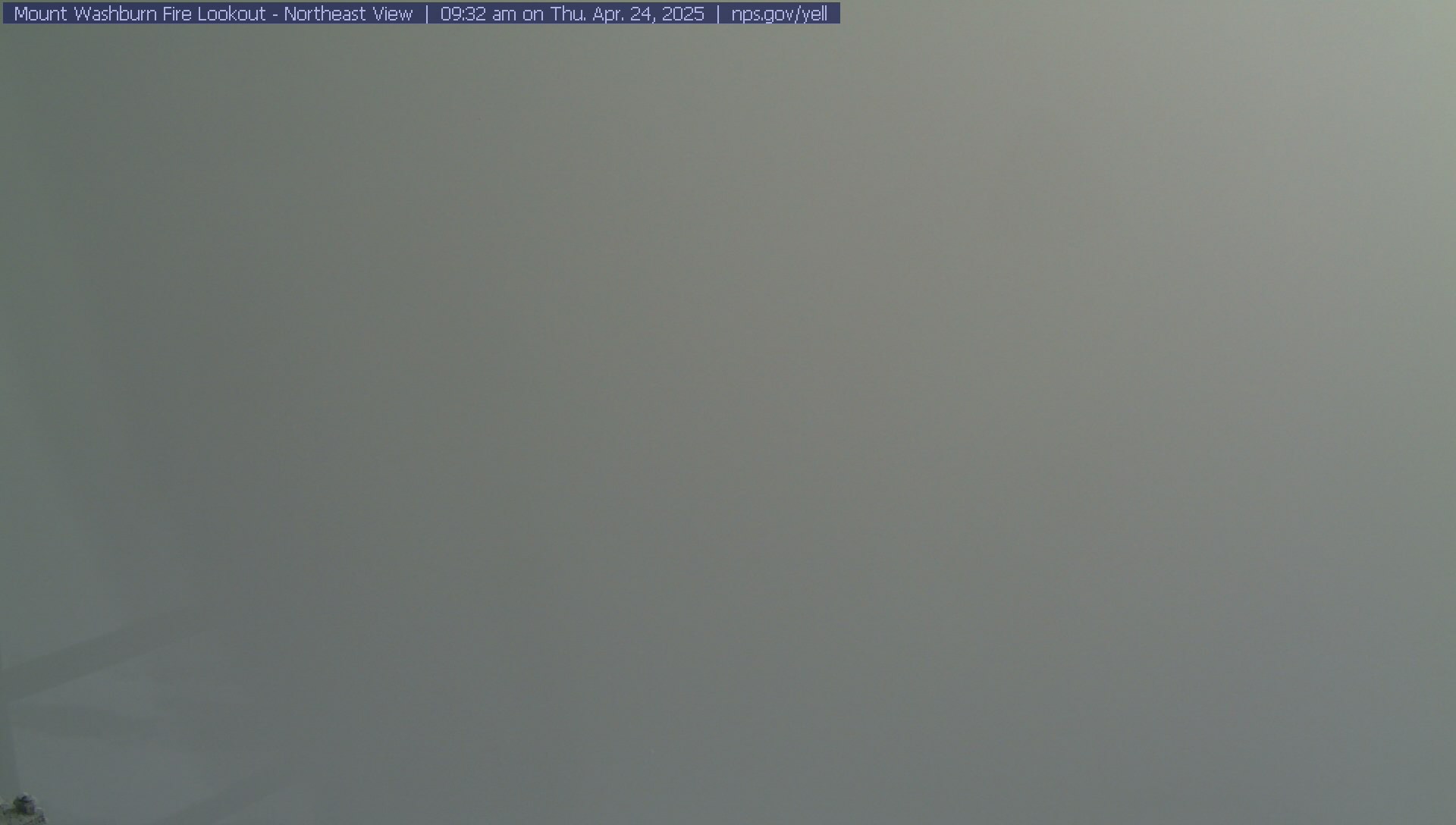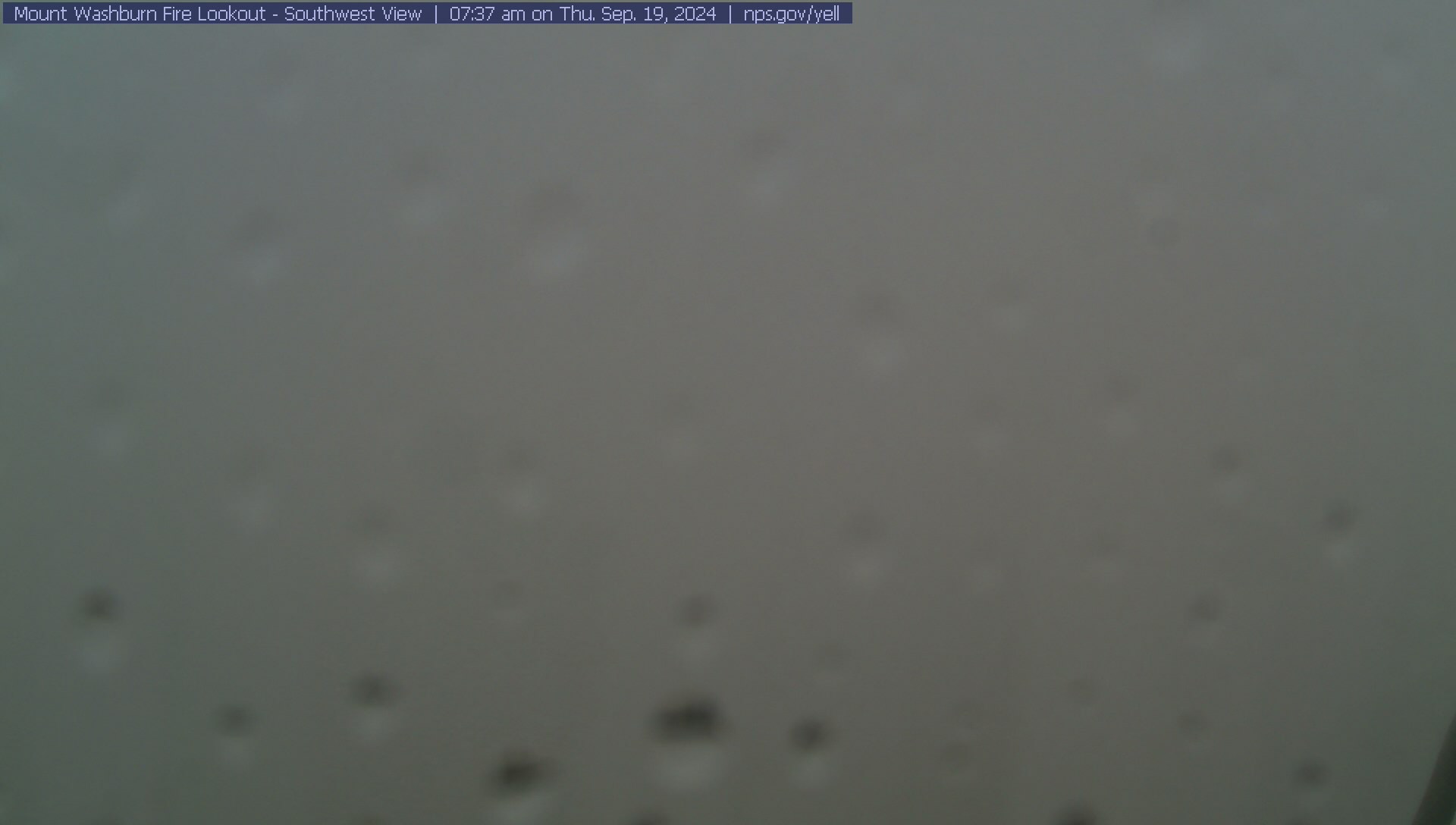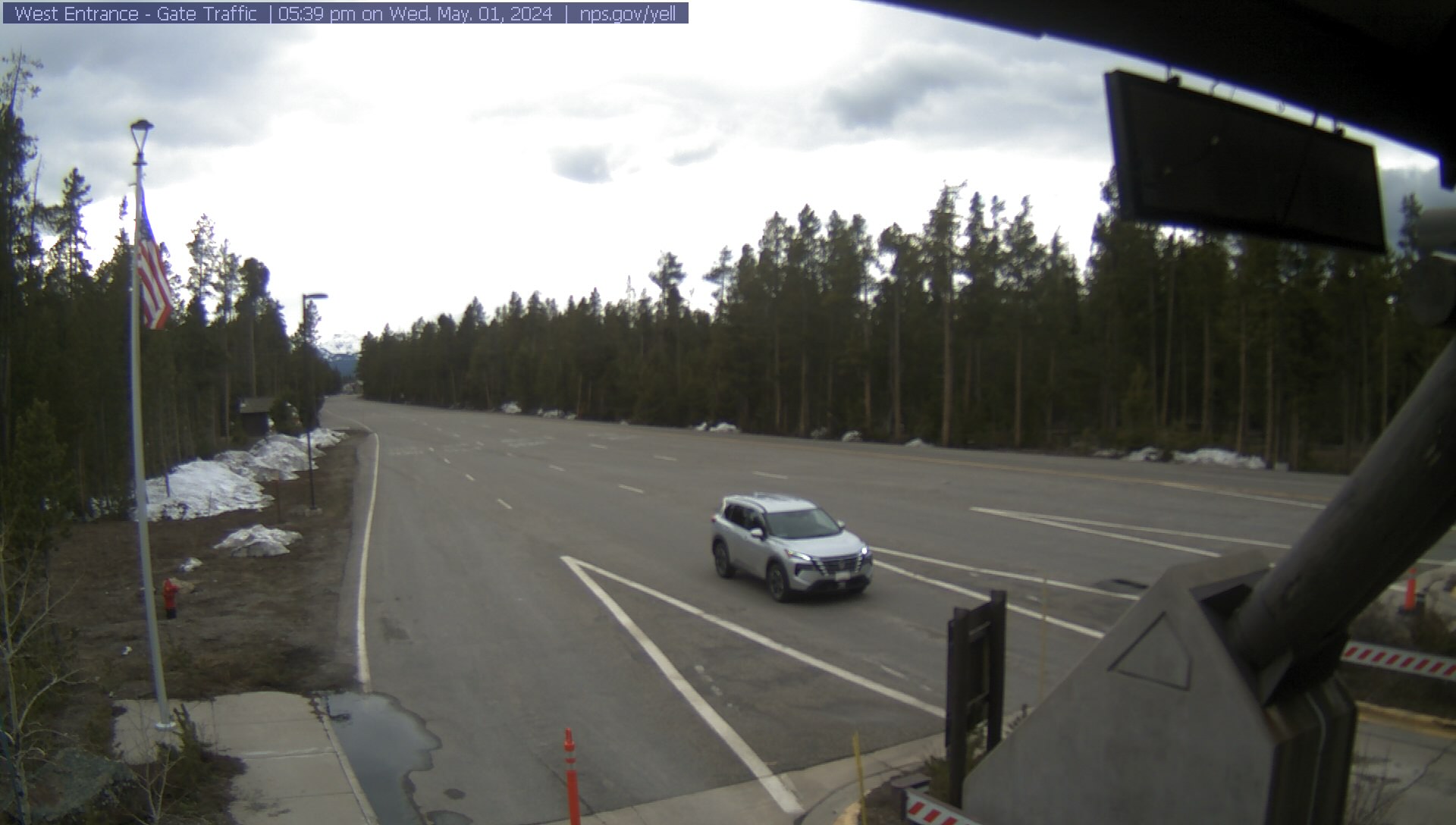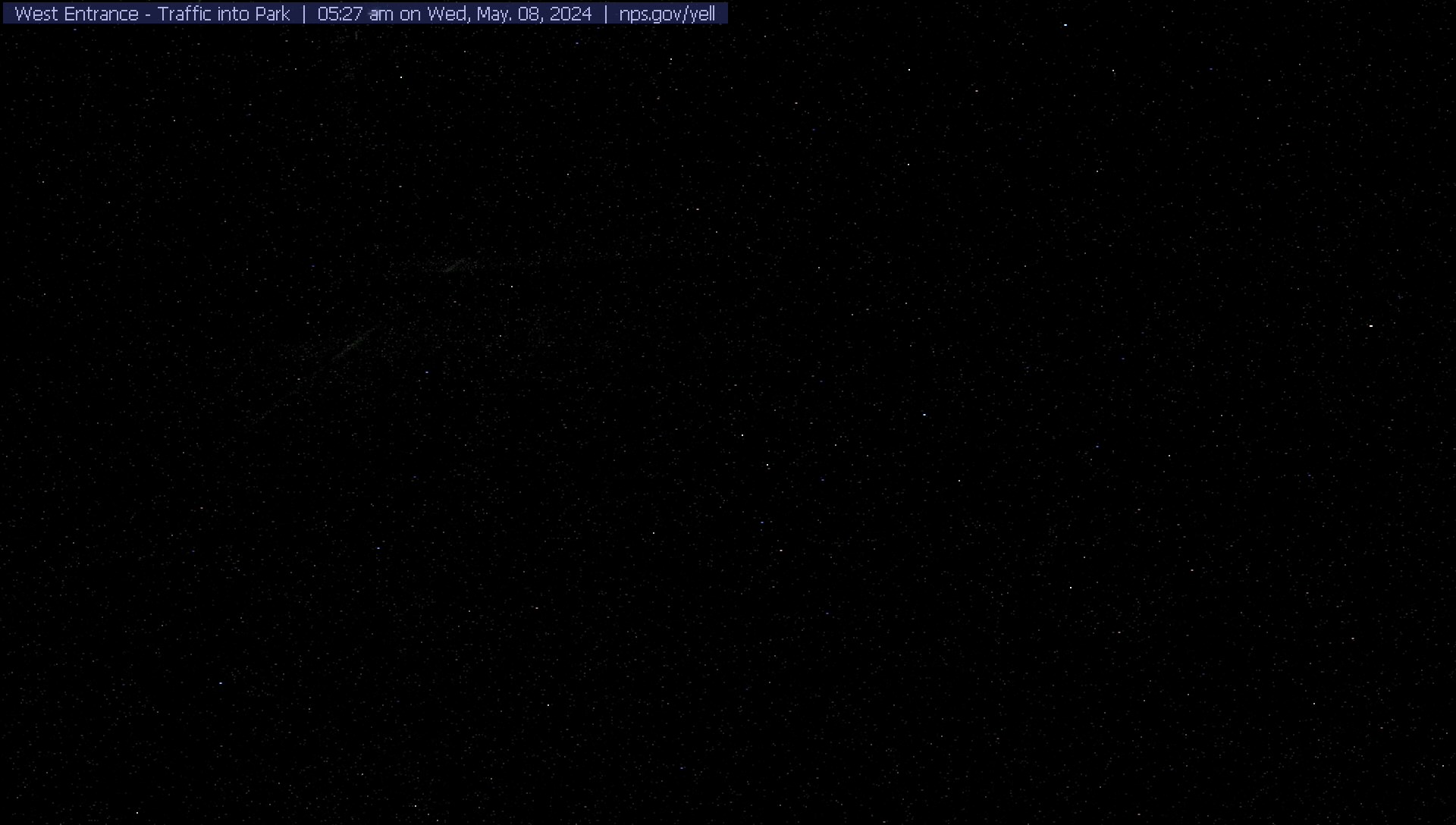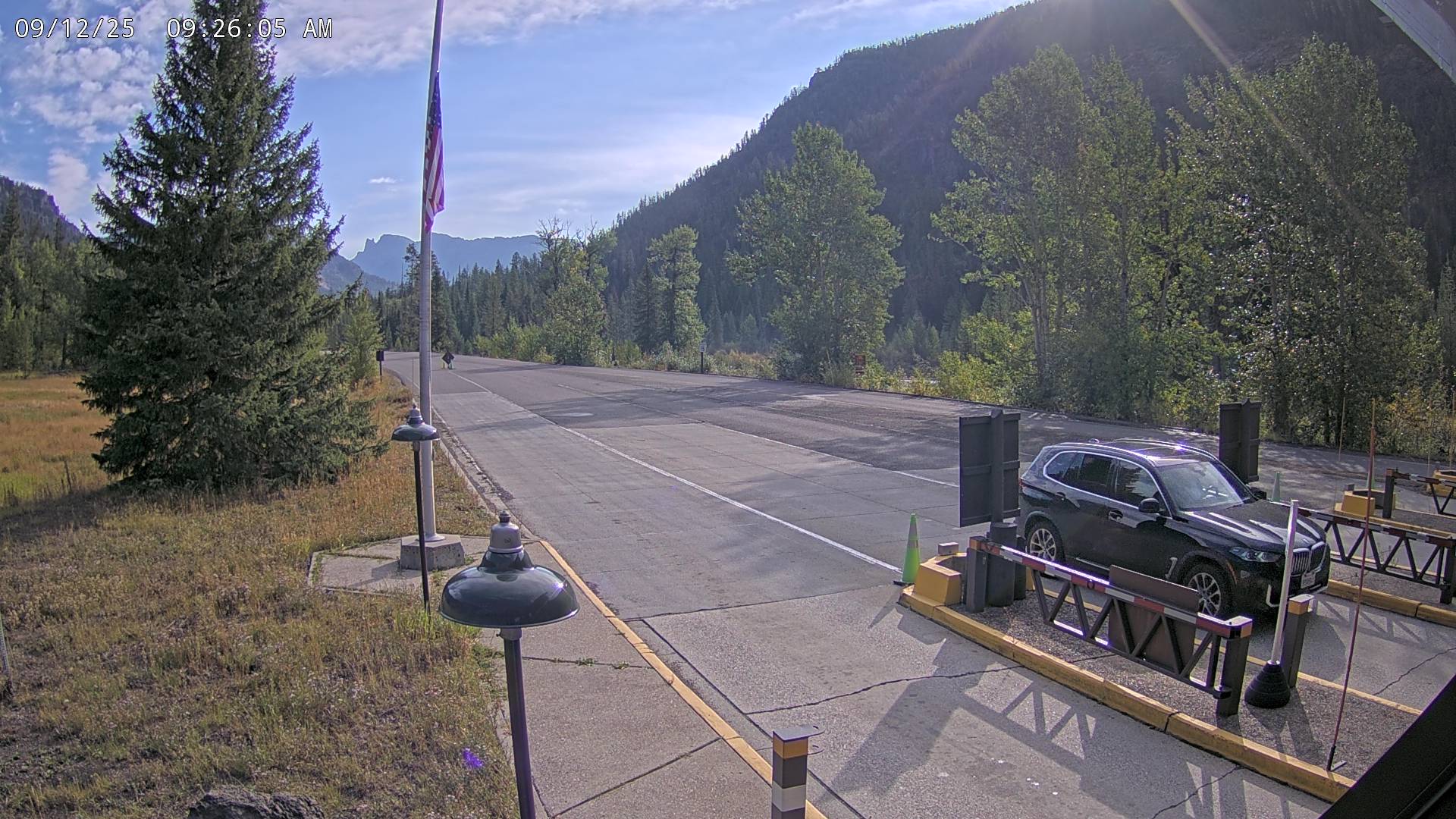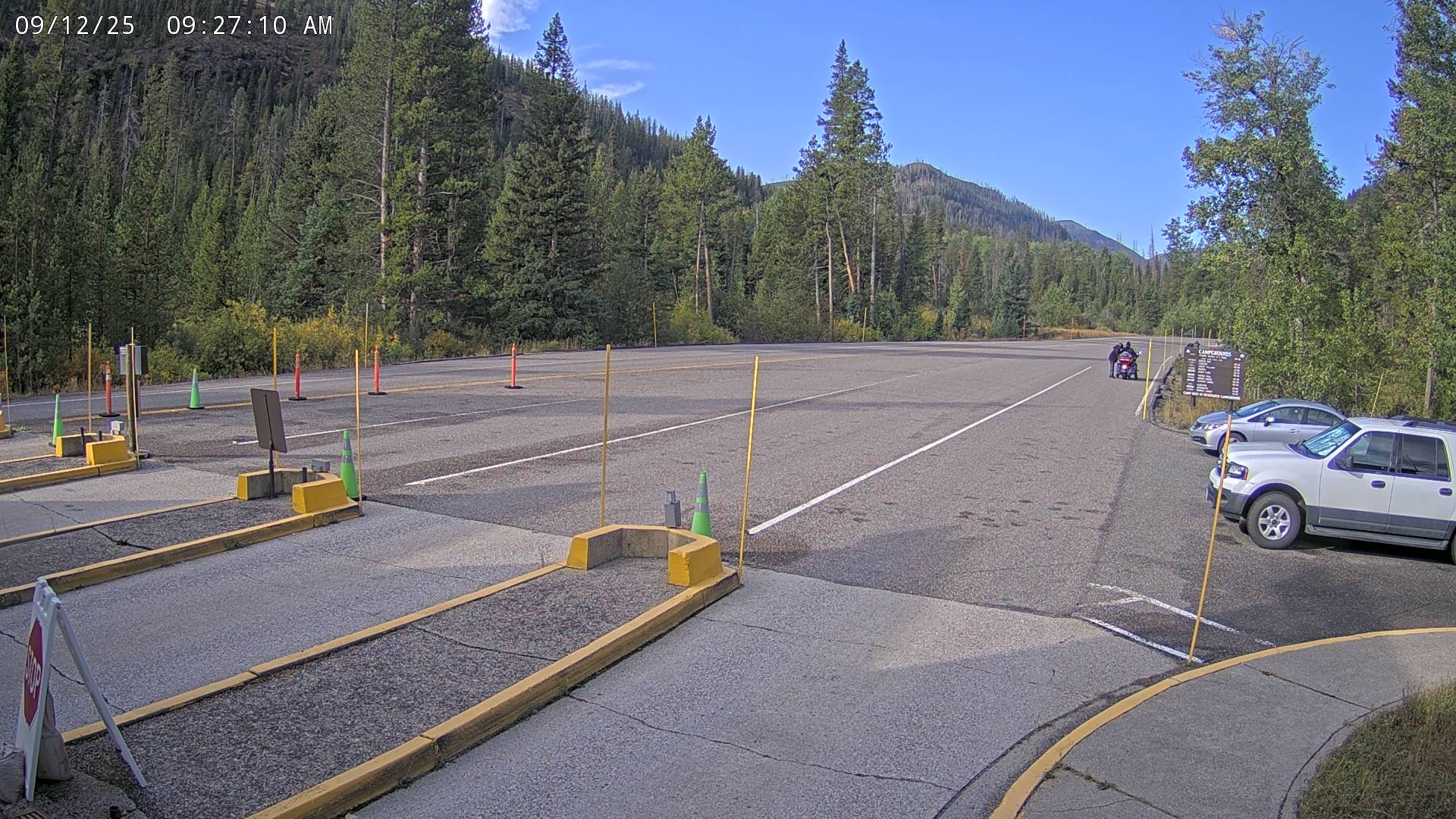|
There are ten webcams showing views throughout Yellowstone National Park—one of which streams live video of Old Faithful and the Upper Geyser Basin. Whether you’re checking the weather, hoping to catch a geyser eruption, or just looking for a virtual escape into nature, these webcams bring Yellowstone’s landscapes and wildlife right to your screen. Take a peek and see what’s happening in the park right now! Old Faithful & the Upper Geyser Basin Livestream | Thanks to volunteers, this webcam provides a streaming view of Old Faithful Geyser and other happenings around the Upper Geyser Basin—one of the most unique and dynamic places on earth with about 500 active geysers. This live view is made possible by Canon USA, Inc. through a generous grant to Yellowstone Forever, the official non-profit partner of Yellowstone National Park.
Old Faithful Loading…
Castle Loading…
Grand Loading…
Daisy Loading…
Riverside Loading…
Great Fountain Loading…
Notes on Predictions: - Predictions are not available when the Old Faithful Visitor Education Center is closed, typically early November through mid-December and mid-March through mid-April. - The last prediction made will remain up until a new prediction is available. 
Static WebcamsWebcam
North Entrance - Out of the ParkThis webcam is on the park's North Entrance at Gardiner, Montana. It shows current conditions at the entrance with Roosevelt Arch in the background. The arch became known as Roosevelt Arch after President Theodore Roosevelt, who was vacationing in the park, spoke at the ceremony to lay the cornerstone in 1903. The arch is inscribed with a phrase from the legislation establishing Yellowstone National Park: "For the benefit and enjoyment of the people." View WebcamWebcam
North Entrance - Electric PeakMorning views from this webcam are spectacular, especially during the winter when the morning sun touches Electric Peak. Look for wildlife—elk, bison, and pronghorn can be seen grazing here. Occasionally you may see the top of oversize vehicles—RVs, tour buses, and delivery trucks—as they stop at the entrance station. View WebcamWebcam
Mammoth Hot Springs - Travertine TerracesYellowstone is a place of change, and this view highlights a place where change is constant and evident—the travertine terraces of Mammoth Hot Springs. Terraces form when water rises through limestone, which then allows the water to carry high amounts of dissolved calcium carbonate. At the surface, carbon dioxide is released and the calcium carbonate is deposited, forming travertine, the chalky white rock of the terraces. In the foreground are the parade grounds for historic Fort Yellowstone—the focal point of daily life at the fort. View WebcamWebcam
Mount Washburn - Northeastern ViewAt 10,219 feet, Mount Washburn towers above Dunraven Pass between Tower Junction and Canyon Village. A fire lookout stationed at the summit provides a popular destination for day hikers, as well as housing for an employee who watches for and tracks fires throughout the summer. This webcam is located inside the living quarters on the top floor and looks out to the northeast. View WebcamWebcam
Mount Washburn - Southern ViewThis webcam atop Mount Washburn captures a south-facing view of the north-central part of the park. During summer, the webcam is often re-positioned by the fire lookout, and smoke from wildfires burning in the park may be visible. View WebcamWebcam
West Entrance - Out of the ParkThis webcam is on the West Entrance to the park at West Yellowstone, Montana. It shows current conditions at the entrance gate. View WebcamWebcam
West Entrance - Into the ParkThis webcam is at the West Entrance to the park at West Yellowstone, Montana. It shows current conditions leading into the park. View WebcamWebcam
East Entrance - Out of ParkThis webcam is at the East Entrance to the park. It shows current conditions leading out of the park. View WebcamWebcam
East Entrance - Into ParkThis webcam is at the East Entrance to the park. It shows current conditions leading in to the park. View WebcamWebcam Questions & AnswersA static webcam updates its image every 30-60 seconds, replacing the old one with a new snapshot. A livestream camera continuously broadcasts live video in real time. The livestream camera is controlled by volunteers and, ocassionally, by park staff. Volunteers typically operate the camera from sunrise to sunset. More Information |
Last updated: December 15, 2025

